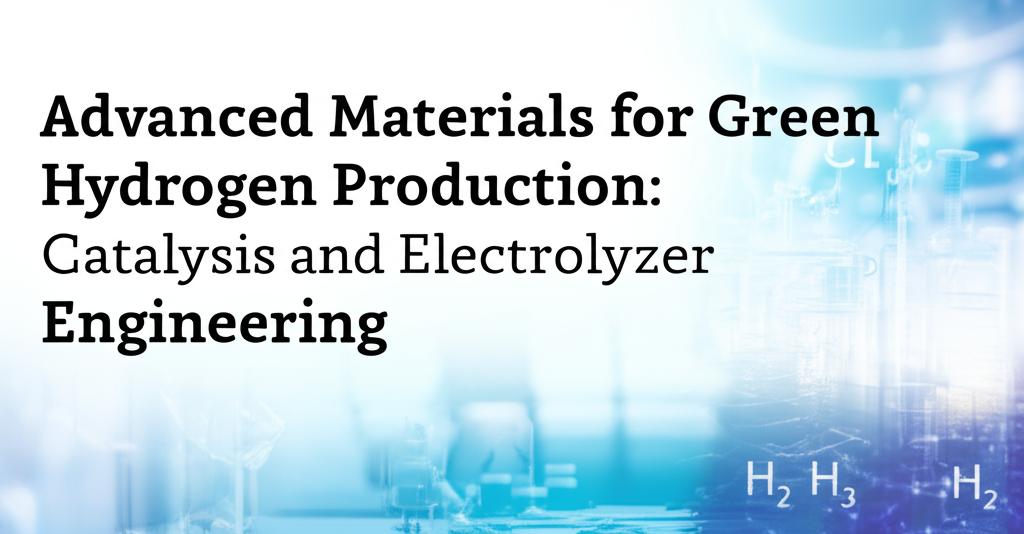The pursuit of a sustainable energy future is increasingly reliant on the promise of green hydrogen, produced through water electrolysis powered by renewable resources. Significant advancements in materials science are crucial for enhancing the efficiency, durability, and cost-effectiveness of this technology. This article delves into recent breakthroughs in catalysis and electrolyzer engineering that are paving the way for large-scale green hydrogen production.
At the heart of efficient water splitting lie advanced catalytic materials. Researchers are actively exploring novel catalysts that can accelerate the two half-reactions involved in electrolysis: the hydrogen evolution reaction (HER) and the oxygen evolution reaction (OER). For HER, while platinum-based catalysts remain highly efficient, their scarcity and cost have driven research towards earth-abundant alternatives. Transition metal dichalcogenides (TMDs) like molybdenum sulfide (MoS2) and cobalt sulfide (CoS2), as well as nickel-based catalysts, are showing considerable promise. Innovations also include the use of graphene materials derived from industrial waste as proactive supports for electrocatalysts like nickel-iron layered double hydroxides (LDHs), which can improve reaction kinetics and electron transfer rates.
The OER is often the bottleneck in water splitting due to its slower kinetics and higher overpotential requirements. Iridium and ruthenium oxides are effective OER catalysts, but again, their high cost is a concern. Consequently, there is a strong focus on developing robust and cost-effective OER catalysts from earth-abundant transition metals such as nickel, iron, and cobalt. Strategies include designing catalysts with optimized nanostructures, exploring high-entropy perovskite oxides, and understanding the synergistic effects between the catalyst and its support material. Advanced characterization techniques and theoretical modeling, like Density Functional Theory (DFT), are providing deeper insights into reaction mechanisms at the atomic level, guiding the rational design of more active and stable catalysts.
Beyond the catalysts themselves, engineering the electrolyzer components is critical. This includes the development of new membrane materials, particularly for Proton Exchange Membrane (PEM) electrolyzers and Solid Oxide Electrolysis Cells (SOEC). For PEM electrolysis, new models for mass transport within the cell are being developed. In SOEC systems, which operate at high temperatures and offer high efficiency, research is focused on metallic materials that can withstand the harsh operating conditions.
A key challenge is ensuring the durability of all components, especially under the dynamic operating conditions imposed by intermittent renewable energy sources. Catalysts and membranes must resist degradation from fluctuating voltages, currents, and corrosive environments. Ongoing research aims to develop robust catalyst structures and protective layers.
Furthermore, the integration of advanced materials into scalable and economically viable electrolyzer systems is a major engineering hurdle. This involves optimizing electrode architecture, improving current distribution, and minimizing ohmic losses. The development of 3D electrode structures using materials like graphene oxides from industrial waste demonstrates a move towards more efficient and sustainable electrode fabrication.
The field is also benefiting from interdisciplinary approaches, combining materials science with nanotechnology, surface science, and computational modeling. Machine learning and DFT are increasingly used to accelerate the discovery and optimization of new materials. This holistic approach, from fundamental material design to system integration, is essential for realizing the full potential of green hydrogen.
In conclusion, the rapid evolution of advanced materials for catalysis and electrolyzer engineering is critical for unlocking efficient and affordable green hydrogen production. Continuous innovation in earth-abundant catalysts, durable membranes, and robust cell designs will be instrumental in establishing green hydrogen as a cornerstone of a decarbonized global economy.

